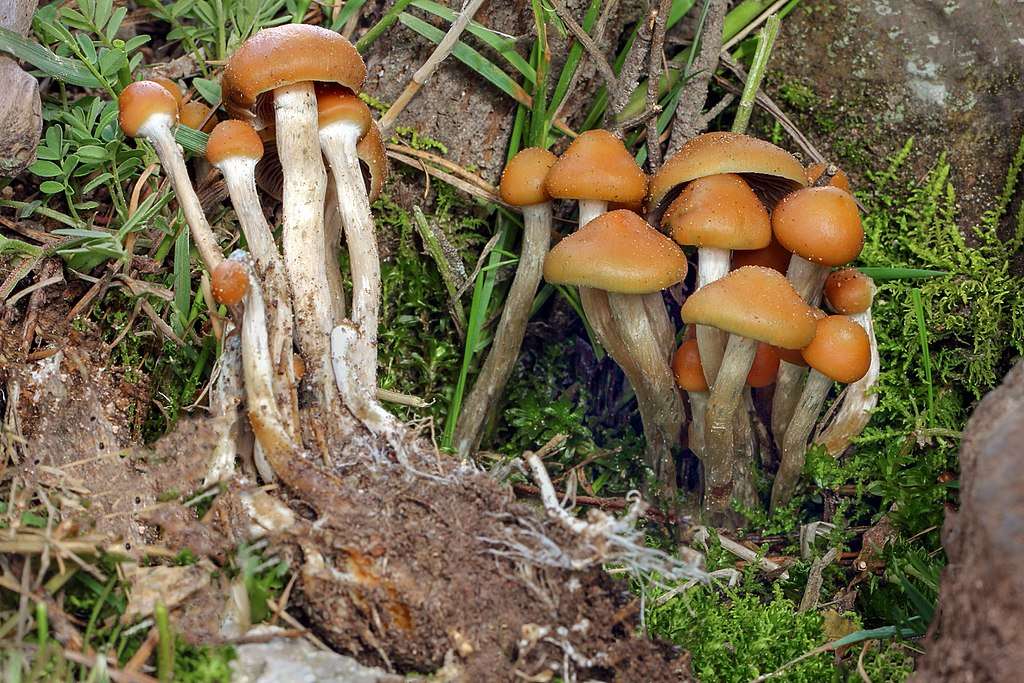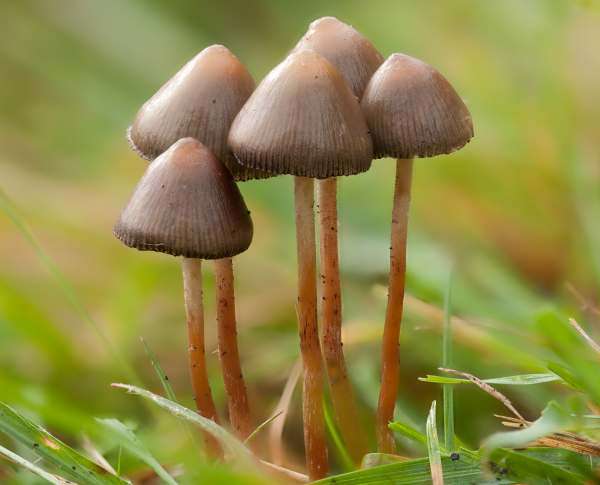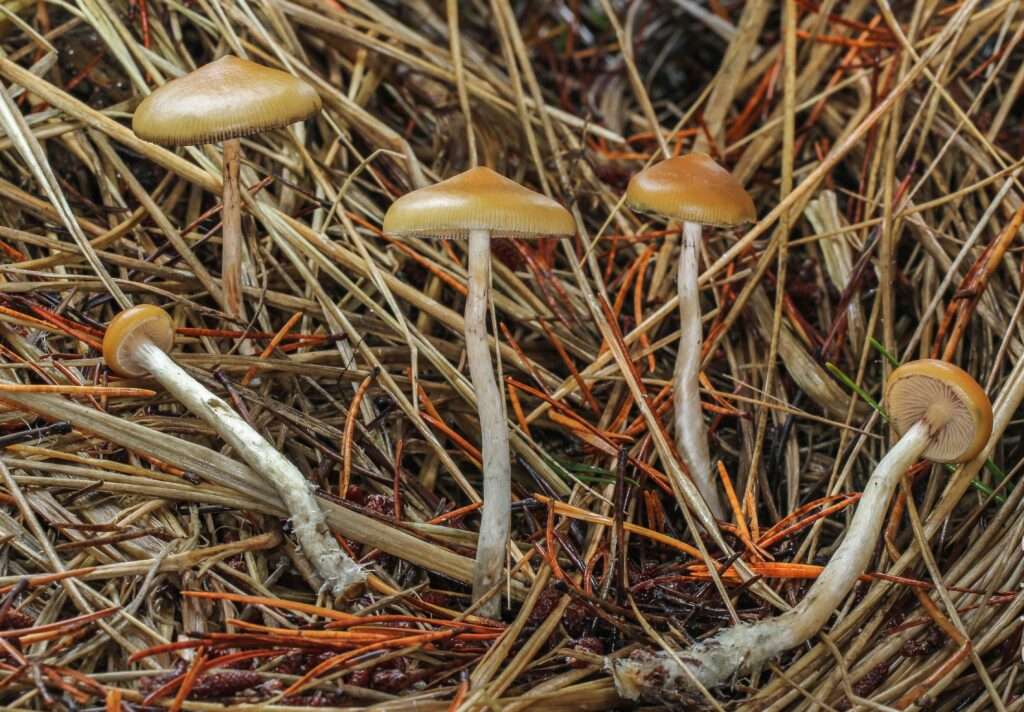
Scientific name
Psilocybe aztecorum
Description
The diameter of the convex to the bell-shaped crown, which can occasionally grow a wide umbo before enlarging and flattening with age, is 1.5 to 2 cm. The cap eventually develops a depression in the center as it ages. The cap is slimy to the touch when wet and has clear striations all the way around the edge. It is very hygrophanous, which means its color changes based on its moisture content. In immature button forms, the hue varies from yellow-brown to golden yellow, to brownish-gray with age, with green-gray tones towards the edge. The coloration progressively fades from the center to the edges, turning completely white at the end. The border barely stains a light green-blue when the cap is damaged, unlike other magic mushrooms, which show a more significant bluing reaction.

Habitat
It inhabits and decomposes decaying leaves, wood, and other organic detritus. Mushrooms usually fruit in clusters of 5-20, and occasionally in clusters. The typical surfaces are decaying logs or branches that have been deeply buried in soil, twigs, or, less frequently, pine cones. It may be observed in woods (a low-density forest or forested region where sunlight can reach the forest floor). Psilocybe aztecorum is only known from the high mountains in central Mexico, such as Nevado de Toluca, Sierra Nevada, and La Malinche in the regions of Mexico, Tlaxcala, and Puebla. Guzmán states that the species is likely to thrive in other high-mountain areas with features similar to the ideal presence sites.
Uses/Importance
The hallucinogenic chemical psilocybin is found in Psilocybe aztecorum. The Nahua people of the Popocatépetl area and the locals of Oaxaca continue to utilize Psilocybe aztecorum in ceremonial settings, though this use is dwindling. Curanderos, or traditional folk healers, are conversant with hallucinogenic mushrooms and diagnose ailments by having the patient consume the mushrooms.
Table





